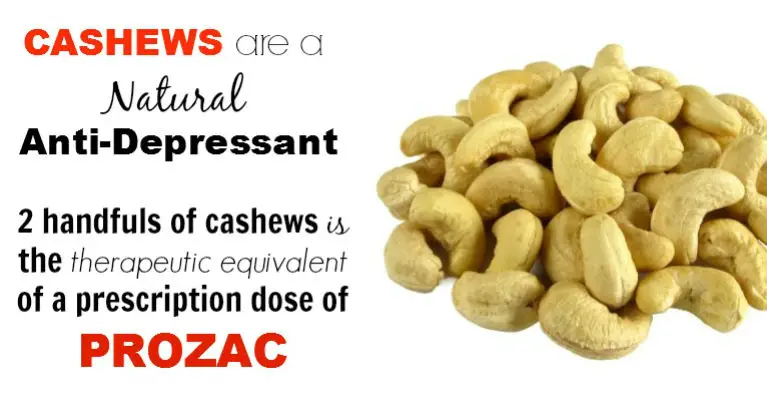41 vitamins and minerals on food labels
Nutrition Facts Labeling — FDA Reader Macronutrients & Minerals (In order) Calcium Iron Phosphorus Iodine Magnesium Zinc Selenium Copper Manganese Chromium Molybdenum Chloride Potassium Vitamins and minerals must appear in the label if: They appear in a serving of the product When they are added as a nutrient supplement When a claim is made about them Nutrition Labels 101: What's Required? What's Optional ... Vitamins A and C will no longer be required on the FDA's Nutrition Facts labels (though manufacturers may still include them if they choose), while Vitamin D and Potassium will now be required. The percent of the daily value is expressed in 2% increments from 2-10% of the daily value; in 5% increments from 10 to 50% of the daily value; and in ...
Why the Nutrition Facts Label Can Lead You Astray « Linus ... On a side note, Nutrition Facts labels aren't required to list any vitamins and minerals except vitamin A, vitamin C, calcium, iron, and sodium. Why not the others? Because the FDA did not consider them vital for Americans. There are many arguments on how that is not in agreement with current scientific evidence. But there's hope on the horizon.

Vitamins and minerals on food labels
Food labeling: MedlinePlus Medical Encyclopedia VITAMINS AND MINERALS Vitamin D, calcium, iron, and potassium are the only micronutrients required to be on the food label. Food companies can voluntarily list other vitamins and minerals in the food. PERCENT DAILY VALUE (% Daily Value) Many nutrients include a percent daily value (%DV). Nutrition Guideline: Vitamins and Minerals Vitamins and Minerals Applicable to: Nurses, Physicians and Other Health Professionals For Professional Reference Only January 2013 Page 3.2.5.1 Nutrition Guideline Vitamins and Minerals Recommendations Most individuals can meet their vitamin and mineral needs by healthy eating using Canada’s Food Guide. PDF Nutrition Facts Labels the nutrition label. • Most packaged foods contain added sugar. • Limit the amount of added sugar you consume each day. It's best for added sugar to be less than 10% of your day's calories. 200 calories are added sugar. That's 50 grams or 12 teaspoons. • Check the ingredient list on nutrition labels.
Vitamins and minerals on food labels. Vitamins and Minerals | Nutrition.gov Vitamins and Minerals Get the facts on vitamins and minerals, from A to Z. Food Sources of Calcium USDA, HHS View a list of common foods and drinks and the amount of calcium in a standard portion. Food Sources of Iron USDA, HHS View a list of common foods and drinks and the amount of iron in a standard portion. Food Sources of Potassium USDA, HHS Optional Nutrients On The Food Label - LabelCalc Since these nutrients are thought to play a more critical role in human health, they are required on the nutrition label. In addition to the above nutrients, the following nutrients are optional: Vitamin D. Vitamin E. Thiamin (Vitamin B1) Riboflavin (Vitamin B2) Niacin (Vitamin B6) Folate. Vitamin B12. Food label template printable - domiciliotrieste.it Panoramic prints. There are ready-to-print worksheets and also templates you can use to make your own custom listening exercises. Choose foods with more fiber, vitamins, and minerals. Allergy-Free Food Labels ~ With food allergies becoming more and more common, put your party guests at ease with these Allergy-Free food labels. Nutrition: How to Read a Nutrition Facts Label ... Fiber is found in fruits, vegetables, and whole grains. Look for the words "whole grain" on the package and ingredient list. Vitamins and minerals. The main types include, vitamin A, vitamin C, calcium, and iron. Vitamin D and potassium also are important. Talk to your doctor about what vitamins and minerals you need and how much.
Vitamins and Minerals Involved In Fluid And Electrolyte Balance Maintaining the right level of water in your body is crucial to survival, as either too little or too much will result in less-than-optimal functioning. Several minerals are key to regulating water balance in different compartments of the body; the most important of these are sodium, potassium, and chloride. Water Distribution and Composition Daily Value on the New Nutrition and Supplement Facts Labels Feb 25, 2022 · However, they are required to list any vitamins and minerals that are added to the food or if a statement is made on the package labeling about their health effects or the amount contained in the ... Displaying vitamins and minerals on your product labels ... What if you wish to highlight additional micronutrients, such as vitamins or minerals? When you generate a nutrition label for a recipe in FoodWorks , the mandatory nutrients according to the Food Standards Code are included in the nutrition information panel (NIP): Energy, Protein, Total Fat, Saturated Fat, Carbohydrate, Sugars, and Sodium. Dietary Supplement Labeling Guide: Chapter IV. Nutrition ... This results in the following order for vitamins and minerals: Vitamin A, vitamin C, vitamin D, vitamin E, vitamin K, thiamin, riboflavin, niacin, vitamin B6, folate, vitamin B12, biotin,...
How to Read Supplement Labels Like a Pro Regulations on supplements Dietary supplements are products that are intended to supplement your diet. They're available in a variety of forms, including tablet, capsule, liquid, pill, and powder.... Vitamins and minerals added to food Manufacturers must list added vitamins or minerals in the ingredient list on the food label. If the manufacturer chooses to make a nutrition content or health claim about an added vitamin or mineral, then the amount of the vitamin or mineral present in the food needs to be included in the nutrition information panel. New Food Label Spotlight: Vitamins and Minerals - Food and ... In the updated label, that same section will jettison vitamin A and vitamin C (the FDA asserts, "In the early 1990's, American diets lacked Vitamins A and C, but now Vitamins A and C deficiencies in the general population are rare"), replacing them with vitamin D and potassium. Calcium and iron will remain on the label. Food Labels | Nutrition Vitamins and Minerals: There are four vitamins and minerals (Vitamin D, Calcium, Iron, and Potassium) that are required on food labels; however, the label might include more than these four. Ingredients: The ingredients are listed in order of their content per volume. If sugar is listed as the first ingredient, there is more sugar in the food ...
An analysis of nutrient facts labels of pediatric multi ... The nutrient facts label on pediatric supplement packages sold by three large retail pharmacy chains was analyzed for micronutrient content. Labels were examined for the presence of trademarked or generic cartoon characters and parent-geared health promotional statements.
Reading Food Labels - Food Smart Colorado 5% Daily Value or less means that a food is a low source of a nutrient. 20% Daily Value or more means that a food is a high source of a nutrient. Limit sodium, sugar, and saturated fat, but get enough fiber, vitamins, and minerals.
Understanding Food Labels | The Nutrition Source | Harvard ... Removal of vitamins A and C, and addition of vitamin D and potassium. Vitamins A and C had been included in previous labels when deficiencies of these nutrients were more common. They are rare today, so have been replaced with vitamin D and potassium, which can run low in the diets of some Americans. How do I use the % Daily Value?
Vitamins and Minerals | Food and Nutrition Information ... Create a printable list of foods and nutrients which can be sorted either by food name or in descending order by nutrient content. ... (UL) for vitamins and minerals (including 2019 sodium and potassium intake revisions) USDA National Fluoride Database of Selected Beverages and Foods. USDA. ARS. Nutrient Data Laboratory. Release 2 (2005).
PDF Interactive Nutrition Facts Label - Vitamins and Minerals ... Interactive Nutrition Facts Label • March 2020 wwwaovnutritioneucation Vitamins and Minerals Chart 8 * The Daily Values are reference amounts of nutrients to consume or not to exceed each day.
Understanding Nutrition Facts on Food Labels After fats, carbohydrates, dietary fiber, sugars, and protein are listed on the food label. These items are followed by specific nutrients in the food, such as vitamin A, vitamin C, calcium, and...
How to calculate percents of vitamins and minerals on ... In the Nutrition Facts label, which vitamins and minerals are listed? Biotin, choline, folate, niacin, pantothenic acid, riboflavin, thiamin, and vitamins A, b6, b12, c, d, e, and K are among the 14 vitamins that may be stated on the Nutrition Facts label. Minerals are inorganic substances present in soil and water naturally.
Food Labels | Nutrition.gov Folate and Folic Acid on the Nutrition and Supplement Facts Labels HHS, Food and Drug Administration, Center for Food Safety and Applied Nutrition Learn what common foods are natural sources of the vitamin folate, plus what foods may have folic acid added during processing. Interactive Nutrition Facts Label HHS, Food and Drug Administration




Post a Comment for "41 vitamins and minerals on food labels"